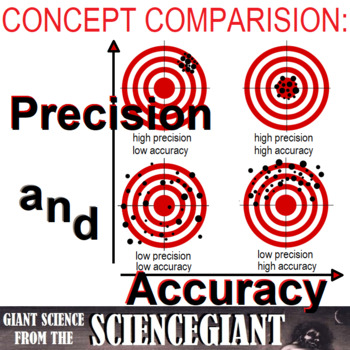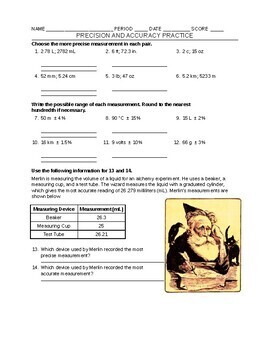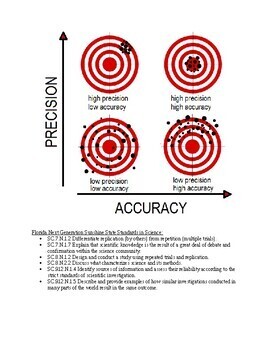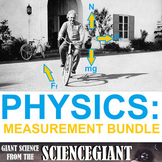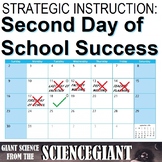Concept Comparison: Accuracy and Precision in Measurements
- Word Document File
Also included in
- Teachers use the Strategic Instruction Model (SIM) Framing Routine to transform abstract main ideas and key topics into a concrete representation that helps students think about and talk about the key topic and essential related information. SIM is about promoting effective teaching and learning ofPrice $7.85Original Price $11.64Save $3.79
- A Second Day of School Starter Pack (or Survival Kit), because all that faculty team building and professional development on growth mindset leaves little time for teacher planning for the first week back to school. Once the class rules and routines are established, it's time for Ts to turn to contePrice $14.00Original Price $21.50Save $7.50
Description
Many people use the terms “accuracy” and “precision” interchangeably. However, for students of science, these words have different implications. This concept comparison helps Ss contrast between accuracy and precision in measurements, and between repeatable and reproducible to be reliable.
The Concept Comparison Routine is used help compare and contrast key concepts. Specifically, students use like and unlike characteristics and categories shared and not shared by two or more concepts to better understand the overall concept.
Personally, I use the Routine to figure out what I want to say and how I want to say it. I keeps my "Sage on the Stage" time limited to what fits onto 1 page. This product includes the completed concept comparison, and the student version blanked except for titles and graphics already filled in. It also includes a math worksheet, and a reading article on virtue of accuracy. It's all in Microsoft Word .doc form so that Ts can customize the discussion to fit the needs of their Ss.
These Concept Enhancement Routines have the following learning objectives and outcomes: Students Will Be Able To (SWBAT/"I Can"):
- identify skills scientists use to learn about the world
- identify math skills scientists use in collecting data and making measurements
- identify math tools scientists use in analyzing data
These Concept Enhancement Routines are classroom tested to help students with the following Florida Next Generation Sunshine State Standards in Science:
- SC.7.N.1.2 Differentiate replication (by others) from repetition (multiple trials).
- SC.7.N.1.7 Explain that scientific knowledge is the result of a great deal of debate and confirmation within the science community.
- SC.8.N.1.2 Design and conduct a study using repeated trials and replication.
- SC.8.N.2.2 Discuss what characterizes science and its methods.
- SC.912.N.1.4 Identify sources of information and assess their reliability according to the strict standards of scientific investigation.
- SC.912.N.1.5 Describe and provide examples of how similar investigations conducted in many parts of the world result in the same outcome.
Related Products
- Question Exploration: SI Metric Measurements in STEM Fields
- Question Exploration: How Much Does 1+1= In Significant Digits?
#StayGiant and stay up on my new resources and STEM news. Look for the green ★ star near the top of any page within my store and click "FOLLOW". Or follow @TheScienceGiant Twitter. Stand on The Shoulders of Giants, and together we'll see further, inspire students, and enlighten inquisitive minds!

